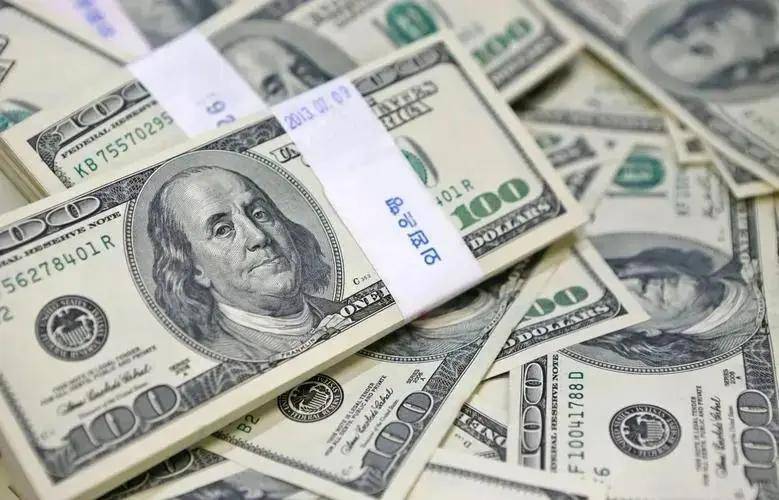
On the first trading day of September, the US dollar index fell below the 98 level to 97.534, hitting a new low since July 28th. The market is betting with a probability of over 90% that the Federal Reserve will cut interest rates by 25 basis points in September, and the structural contradictions and policy uncertainty of the US economy together constitute the core logic of the weakening of the US dollar.
The non farm payroll data for July in the United States only added 73000 jobs, far below the market expectation of 175000, with a total downward revision of 258000 for the first two months. According to a survey conducted by enterprises, the average monthly increase in employment from May to July was only 35000, a sharp drop of 71% compared to the same period in 2024 when there were 123000 new jobs added. This' stall 'in the job market directly shakes the market's confidence in a' soft landing 'of the US economy. Goldman Sachs research points out that if the non farm payroll data continues to be weak in August, it may trigger the US dollar index to fall below the technical support level of 97. According to historical patterns, after the Federal Reserve cut interest rates in September 2024, the US dollar index fell by 4.2% within three months, and the initial shift in monetary policy was often accompanied by a weakening of the US dollar.
The impact of the weak job market has penetrated into the consumer sector. Despite a 0.5% month on month increase in consumer spending in July, the 0.8% increase in durable goods purchases is due to the reality that car manufacturers are delaying production expansion due to rising tariff costs. The employment growth in the service industry has slowed down to 0.4%, indicating that consumer momentum may decline in the coming quarters.
The power game between the Trump administration and the Federal Reserve has intensified market concerns. The President's attempt to dismiss Federal Reserve Governor Cook has raised questions about the independence of the central bank. According to data from the Zhishang Institute, the incident caused the US dollar index to fall by 0.8% within an hour, and the 10-year US Treasury yield surged by 12 basis points. The federal court's ruling that "most tariff policies are illegal" did not take immediate effect, but it exacerbated policy uncertainty. If the Supreme Court upholds the original ruling, the prices of imported goods in the United States may decrease by 3% -5%, weakening the "anti inflation" attribute of the US dollar. The manufacturing PMI new orders index fell below the boom bust line, indicating that companies have repeatedly postponed capital expenditures due to trade policies.
Fiscal risks are also highlighted. The US Prosperity Act's $4.1 trillion spending plus treasury bond exceeded $38 trillion, and debt accounted for more than 120% of GDP. Morgan Stanley warned that if the yield of treasury bond rises by 50 basis points due to the fiscal risk premium, the dollar index will depreciate by 3% -5% annually. European investors have sold US Treasury bonds net for six consecutive weeks, with funds flowing into safe haven assets such as the euro and yen.
The weakening of the US dollar is due to structural changes in global capital flows. Japanese investors sold 12.6 trillion yen of foreign bonds in March and April, a new high since 2020. Eurozone data shows that the proportion of the euro in global foreign exchange reserves rose to 22.3% in the second quarter of 2025, up 1.8 percentage points from the low point in 2024. Emerging markets have become the new favorite of funds, with the US China interest rate differential narrowing to 250 basis points and support for the RMB exchange rate. In August, the offshore RMB appreciated by 1.2% against the US dollar. Asian currencies exhibit a characteristic of "linked appreciation": the exchange rates of the Korean won, Singapore dollar, and Thai baht against the US dollar have risen by 0.8%, 0.6%, and 0.5% respectively, indicating an enhanced ability of regional economic integration to hedge against US dollar risks.
On a technical level, the US dollar index has fallen below the key support of the 200 day moving average, and the MACD indicator has shown a "death cross" pattern. If this week's non farm payroll data falls short of expectations, it may trigger stop loss orders for programmatic trading, exacerbating short-term volatility. However, in the long run, the depreciation of the US dollar still depends on the pace of interest rate cuts by the Federal Reserve and the relative speed of global economic recovery. If economies such as the eurozone and China are simultaneously loose, the weak pattern of the US dollar may continue until 2026.
The current wave of dollar depreciation is essentially a resonance between the US economic cycle, policy cycle, and global monetary system changes. The weak labor market solidifies the foundation for interest rate cuts, the escalation of political risks shakes market confidence, and the global capital reallocation accelerates the reconstruction of the US dollar's position. Investors need to closely monitor the September non farm payroll data, the Federal Reserve's dot matrix, and the pre election policy direction, as these factors will determine whether the US dollar can stabilize at the 97 level or initiate a new depreciation cycle. In this currency game, the halo of the US dollar as a safe haven is fading, and the era of diversified asset allocation has arrived.

報告顯示,中國電力投資加速增長,預計2024年電網基建投資將超過5300億元。
近日,市場迎來了一則引人注目的消息:工業巨頭3M公司(MMM.N)在本周五公布了其季度業績報告,隨後股價飆升至近兩年來的
最近,外媒給OpenAI算了筆賬,今年可能要血虧50億美元。
近日,巴黎奧運會和世界鐵人三項協會聯合發布了一項重大決定,宣布因塞納河水質污染問題,原定於近期進行的奧運會鐵人三項首次下
當地時間7月18日,法國巴黎發生了一起令人震驚的持刀襲警事件。
近期,一則重大消息在國際舞臺上引起軒然大波,馬來西亞宣布加入金磚國家。
調查發現,互聯網和智能手機的使用幹擾了韓國近五分之一學生的生活。